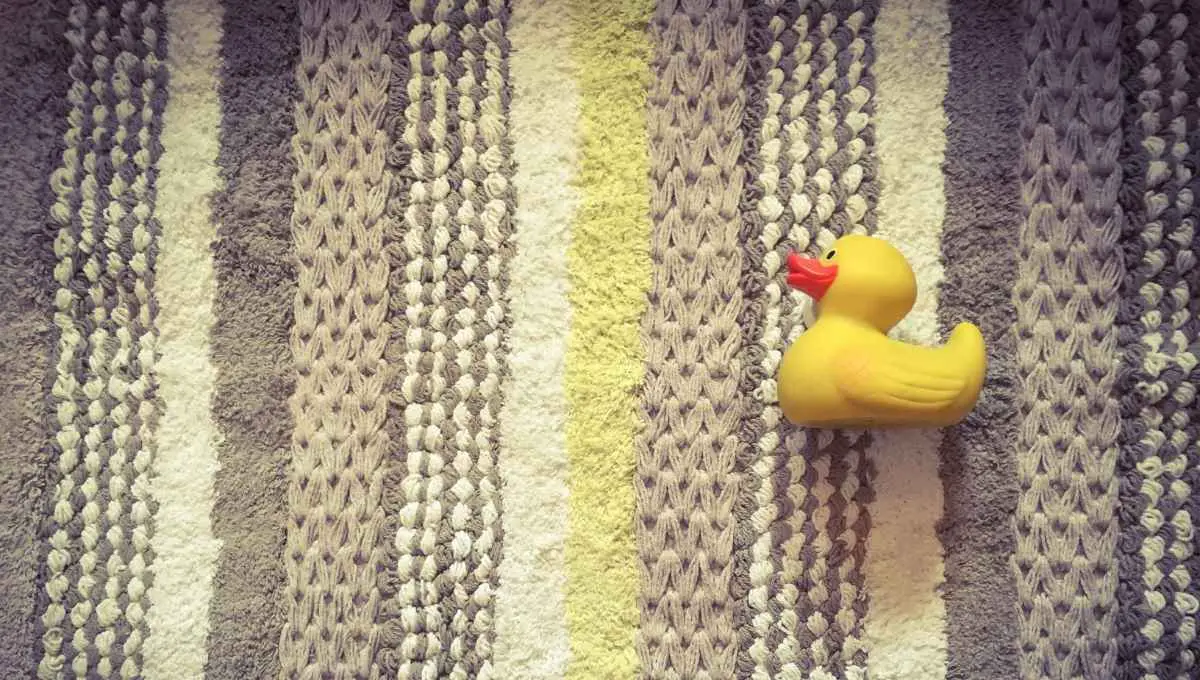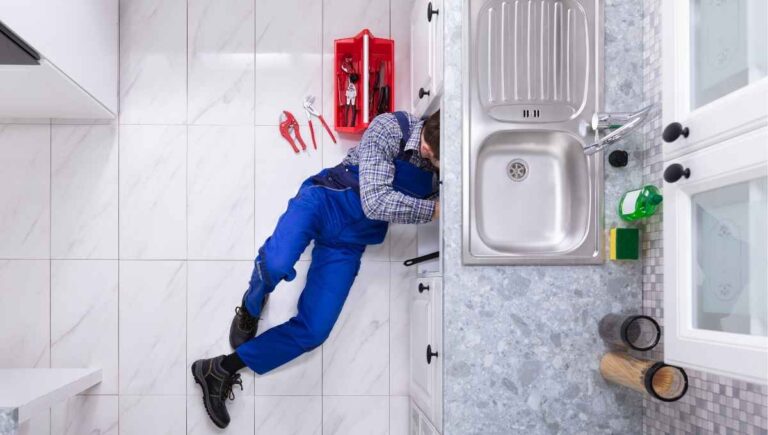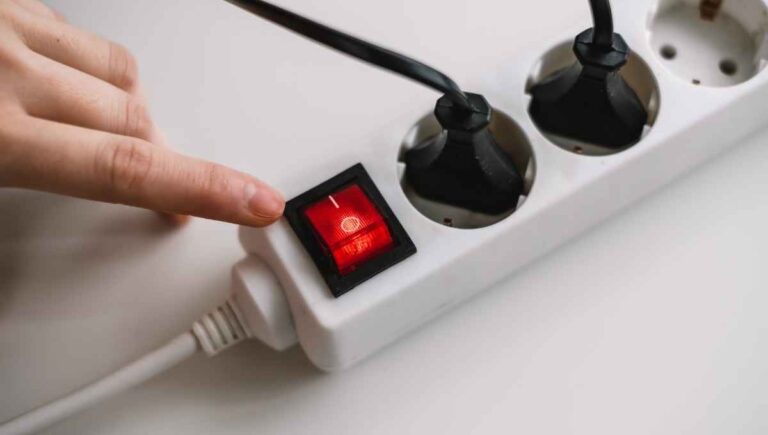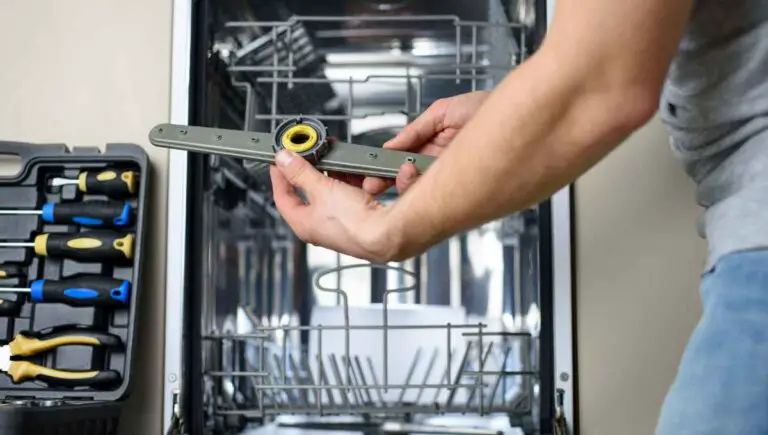Can You Use a Bath Mat in the Kitchen? (Try This Easy Hack)

Kitchen mats are expensive and sometimes hard to find at a good price. Why shop for kitchen mats when you already have perfectly good bath mats around the house? But before you start improvising, it’s important to actually know if you can use a bath mat in the kitchen.
Bath mats can easily be used in the kitchen instead of kitchen mats and towels. Bath mats work well on kitchen floors because they help protect your shins and back when standing for long periods of time. They also help to catch liquid and food spills like a typical kitchen mat would.
The verdict is that so long as people have the chance to clean it up, bath mats are great replacements for a typical kitchen mat. That isn’t the end of the story, though!
Kitchen mats can have a couple different purposes, but not every bath mat can work for every purpose. Let’s take a deeper dive into kitchen mats, anti-fatigue mats, and bath mats.
This post contains affiliate links. This means Household Blogger may earn a commission should you make a purchase using any of our links. Please refer to our full affiliate disclosure policy for full details.
Here’s a Quick Pro Tip!
Since bath mats can double as kitchen mats in most situations, there’s usually no need to go out and purchase a specialty kitchen mat. But it’s a different story if you don’t have a suitable bath mat or you need an anti-fatigue mat.
Here are the best kitchen mats on the market, including quality anti-fatigue mats:
1. Pretigo Gray Kitchen Rug – This absorbent rug will keep spilled water off your floor.
2. Kangaroo Ergonomic Mat – A mat that’s anti-fatigue and pro-productivity!
3. Pauwer Kitchen Mat Set – For when you want something decorative and functional.
Putting A Kitchen Mat In Your Home
You might not want a kitchen mat in your home depending on your personal needs and how much time you have to clean. On top of that, you’ll want to know where you should put your kitchen mat!
Should You Have a Mat In The Kitchen?
Having a mat in the kitchen is generally a good idea, especially if you spend a lot of time there. Standing on the hard tile for long periods of time can cause damage to your feet, ankles, shins, and even back. Kitchen mats also help catch spills and prevent slipping.
Having a kitchen mat really comes down to personal preference. Still, your health is worth purchasing a kitchen mat for!
Make sure the rug you buy is anti-fatigue or would serve the same function if you do end up buying one for health reasons.
Alternatively, kitchen mats can be a cute decoration and they can cover up any floor stains you don’t want to be seen.
Is It Gross To Have a Rug In The Kitchen?
Putting a rug in the kitchen isn’t necessarily gross. You can use it to cover up uneven tiles and floor stains, which can make your kitchen look nicer. It can also catch liquid or food spills and might be easier to wash than the floor underneath it.
On the flip side, you do need to wash it regularly to keep it clean.
Don’t let anyone tell you that your kitchen rug is gross. So long as you’re cleaning it regularly, there’s nothing dirty about a kitchen mat!
When cleaning the mat, make sure you follow the instructions on the care tag so you don’t ruin it.
What Is The Point Of a Kitchen Mat?
Kitchen mats serve multiple purposes depending on the type. Many kitchen mats are anti-fatigue mats, which lessen the stress of standing up for long periods of time. Other kitchen mats are purely decoration or are used to catch spills.
Many people put mats underneath their sinks so that any water splashes will get soaked up by the mat.
That way, you won’t have to go over the floor with a towel to keep your floor dry. If you ever leave water on the floor or on certain parts of the counters, it can cause damage.
Absorbent kitchen mats work best for protecting your floors from water. They can also prevent slipping, so they’re doubly useful!
What Kind Of Mat Is Good For The Kitchen?
Soft, absorbent materials are best for soaking up water. Plastic-backed mats can work for anti-skidding, but special anti-fatigue mats work for both preventing skidding and for safeguarding foot health.
You can repurpose most bath mats as absorbent kitchen mats. Just make sure the bath mat is clean first, and it can do the job just fine.
Unfortunately, anti-fatigue mats tend to be made in a specific way. A proper anti-fatigue mat will be at least 3/8ths of an inch thick and will be made out of unique materials.
These materials include vinyl, rubber, and polyurethane. Sometimes blends of vinyl and rubber are used, too.
That’s definitely not something you’d find in your typical bath mat!
Should You Put a Rug In Front Of The Kitchen Sink?
Putting a rug in front of the kitchen sink is a good idea for catching water and food spills. An absorbent, plastic-backed rug will do the best job of protecting your floor from spills and will also prevent you from slipping while you work in the kitchen.
Anti-fatigue rugs are another option that is often placed in front of the kitchen sink. They aren’t absorbent, but they do still protect the floor (and your feet, while they’re at it!).
No matter what rug you choose, make sure that it will be easy to wash if it does end up eating the leftover spaghetti sauce.
Remember that any rug that has food spills on it should definitely be cleaned, and cleaning your kitchen rug regularly is always going to be the most hygienic option!
Using a Bath Mat As a Kitchen Mat
By now, you’ve familiarized yourself well with the different purposes of a kitchen mat. So, what about you? Will a bath mat be a good alternative to a specialty kitchen mat?
Can You Use a Bath Mat In The Kitchen?
You can absolutely use a bath mat in the kitchen as a replacement for a proper kitchen mat. Depending on the style you get, they are functionally identical. The only exception is anti-fatigue mats, which are a kind of special kitchen mat made of vinyl, rubber, or plastic.
Anti-fatigue mats serve the purpose of keeping your feet, shins, and back healthy while standing in the kitchen for extended periods of time.
You can’t really replace this with any sort of bath mat, since they’re fundamentally made differently and use different materials.
Any bath mat that isn’t super fluffy will work in the kitchen, though! Rug-like bath mats and plastic-backed bath mats are both great options.
What’s The Difference Between a Bath Mat And a Kitchen Mat?
There might be no difference between a bath mat and a kitchen mat, depending on the specific mats. Extremely fluffy styles are usually reserved for bathrooms, not for kitchens. Some kitchen mats are made of vinyl, rubber, or plastic and are called anti-fatigue mats.
These are special mats that aren’t made to be used in the bathroom.
The job of an anti-fatigue mat is to protect your feet, ankles, shins, and back from strain and stress.
Standing up for long periods of time can do serious damage if you don’t take care of your feet using anti-fatigue mats, special shoes or insoles, or other protective gear.
Most casual chefs will never need an anti-fatigue mat, but they’re common in professional kitchens.
Hobby chefs and stay-at-home parents who do a lot of cooking and cleaning in the kitchen should also consider purchasing an anti-fatigue mat.
Is It Wrong To Use a Bath Mat In The Kitchen?
It’s not wrong to use a bath mat in the kitchen, provided that the bath mat is the correct style. Some bath mats are very fluffy, and those should be kept out of the kitchen and away from food spills.
Another thing to keep in mind is that bath mats usually won’t do a great job of protecting your feet.
A plastic-backed bath mat might stop you from slipping, but only an anti-fatigue mat will actually protect your body from the strain of standing up for hours on end.
Bath mats can be cute, stylish, and can easily catch water spills from in front of the sink. But that doesn’t mean they can do everything!
Is It Unsanitary To Use a Bath Mat In The Kitchen?
It isn’t unsanitary to use a bath mat in the kitchen, provided you’ve cleaned it before repurposing it and you continue to wash it regularly. Many bath mats are easier to wash than kitchen rugs are. Rubber bath mats are a particularly sanitary option because they can be cleaned easily.
Whether you’re moving a pre-existing bath mat or buying a bath mat explicitly for your kitchen, it’s really not a big deal.
One thing to look out for, though, is super fluffy bath mats. They may be comfortable when stepping out of the shower, but sometimes that much absorbency can be unhelpful in the kitchen.
Just think of all the spills that happen while you’re cooking.
If you ever spill red wine, pasta sauce, turmeric powder, or anything else prone to staining, you’ll have an awful time trying to get it out.
Can You DIY a Kitchen Mat?
Kitchen mats are a great DIY project if you have the right materials. Since a kitchen mat is essentially just a medium-sized rectangle, making a DIY kitchen mat can be a reasonably easy project to take on for a beginner.
Depending on the type of kitchen mat you want, you’ll either need fabric scraps/weaving materials or a sheet of vinyl, some polyacrylic, and enough fabric to cover the surface of the vinyl.
In this case, the vinyl would act as the backing, the fabric would be decorative and soft, and the polyacrylic will seal everything in.
Making a woven kitchen mat will mean it isn’t quite as spill-resistant as a vinyl-backed one, but it’s the easier option and a great way to use up leftover fabric scraps.
Anti-Fatigue Mats and Bath Mat Alternatives
Bath mats are great, but they really can’t do the same job as an anti-fatigue mat can. It’s time to look at anti-fatigue mats and the kitchen mat alternatives to bath mats.
What Is The Best Material For Kitchen Mats?
Nylon, polyester, polypropylene, acrylic, cotton, rubber, and coconut fiber are some of the best, easiest to wash, and strongest materials. Each one has its own benefits and drawbacks.
Nylon is one of the most common options since it can last for a long time and is easy to clean. Unfortunately, it can be damaged or deformed relatively easily.
Polyester, polypropylene, and acrylic are all reasonably long-lasting and resilient. They’re great anti-slip options.
Cotton and coconut fiber are two natural fibers. Coconut fiber is more environmentally friendly, but cotton has better water absorption. Finally, rubber is the most durable while still being very easy to clean.
What Carpet Is Best For The Kitchen?
The best carpet rugs for the kitchen tend to be flat-weave (if woven), and made out of durable, easy-to-clean materials like cotton, nylon, or rubber. Although there are tons of options out there for materials, most of them fall short of the durability and long-lasting use of rubber.
Of course, the carpet that’s best for your kitchen might not be the best for everyone’s kitchen. You need to think about what you care about most when it comes to a kitchen carpet.
Do you want your rug to be mostly decorative? Or do you want it to be mostly functional?
Carpets that are more functional include anti-fatigue mats, carpets that are easy to clean, carpets with backing, and carpets with good absorbency.
Is It Okay To Have a Rug In The Kitchen?
It’s perfectly fine to have a rug in the kitchen. Although not as common as bath rugs, kitchen rugs serve many of the same purposes. They’re comfortable to stand on, can save your floor from spills, and can prevent slipping.
Some people think that it’s unsanitary or weird to have a rug in the kitchen. The truth is, a kitchen rug will be sanitary so long as you’re cleaning it regularly.
If you’re considering keeping a rug in your kitchen, make sure you’ve thought about the dangers of various spills and messes.
The only barrier to entry is finding a good kitchen rug to purchase and then taking care of the upkeep. If you’re willing to do those things, then go ahead and move a rug into your kitchen!
Do I Need An Anti-Fatigue Mat In My Kitchen?
You don’t need an anti-fatigue mat in your kitchen if you don’t use it frequently. Fetching water, food, and making quick meals for yourself won’t require you to get an anti-fatigue mat. Anti-fatigue mats are usually used in professional kitchens or by hobby chefs who spend a lot of time on their feet in the kitchen.
Even people who don’t spend a lot of time in the kitchen might want to get an anti-fatigue mat, but only in the case that they often experience back, ankle, feet, or leg pain.
There are a variety of anti-fatigue mat materials and they all fundamentally serve the same purpose: keeping you safe.
If you’re experiencing a lot of pain, consider getting an anti-fatigue mat in your place of work. Make sure you’re also following other health guidelines, such as proper footwear.
What Is An Anti-Fatigue Kitchen Mat?
An anti-fatigue kitchen mat is a special kind of kitchen mat designed to prevent strain from standing on your feet for long periods of time. They are generally 3/8ths of an inch thick at a minimum and are made of springy materials like vinyl, rubber, and/or polyurethane.
Anti-fatigue mats aren’t just used in kitchens but are used for a number of professions that involve a lot of standing.
After all, kitchens are far from the only place that happens! Some hobbyists (like hobby chefs) purchase an anti-fatigue mat.
Other reasons to buy one include having weak joints, and muscles, or having foot health issues. Even if you’re only experiencing a little pain, an anti-fatigue kitchen mat can go a long way.
Are Anti-Fatigue Mats Good?
Anti-fatigue mats are a good option for professionals and hobbyists who are on their feet for long amounts of time. They can help prevent serious health conditions, as well as slow the onset of fatigue and pain. In short, anti-fatigue mats are a necessary piece of health equipment for anyone who spends hours standing.
According to a CCOHS report, regularly standing for extended periods can cause a slew of health issues like sore feet, fatigue, back pain, stiffness, and even swelling in the legs.
The reason why this happens is that the amount of blood that reaches your muscles dwindles, which increases how quickly fatigue and pain will cause.
The problems can be long-term, too. Blood pooling in the legs and/or feet can result in varicose veins, which aren’t a huge issue on their own, but are uncomfortable and can cause other health problems. Yikes!
What Kind Of Anti-Fatigue Mat Is Best?
Anti-fatigue mats that are a minimum of 3/8ths of an inch thick and are made of vinyl, rubber, or polyurethane are generally the best. Many anti-fatigue mats can work well, but it does depend on your individual needs.
Basically, you should look for anti-fatigue mats that are thick enough to be comfortable for long periods of time and are made of quality materials.
One of our favorite anti-fatigue mats is the Kangaroo Mat, which offers great relief from pain and fatigue.
We can’t promise it will have you bouncing like a kangaroo, but it is a good option if you do a lot of standing.
Related Questions
What Is The Point Of a Sink Mat?
Sink mats are intended to catch water or food spills, prevent slipping hazards and provide a cushion for your feet while you’re standing in front of the sink. Water spills can potentially damage your floors, so sink mats are a good prevention method for water damage as well as for slipping.
Some sink mats are actually designed explicitly to help relieve pain and fatigue.
This type of mat is called an anti-fatigue mat, and they’re used frequently in professional settings (like kitchens). Most other sink mats are simply plastic-backed, absorbent carpets.
Are Sink Racks Worth It?
Sink racks might be worth it depending on your situation. They do require some upkeep since they’re an extra item you need to wash regularly. However, sink racks serve many purposes, like acting as a dish racks and helping with safely washing fruits and vegetables.
Obviously, whether or not it’s worth it is really up to you. It can be very annoying to have a big, clunky rack to wash every couple of days.
But if you have a stainless steel sink, you should really consider getting one for the sake of protecting that shiny sink basin.
Final Thoughts
There’s nothing better than having a cushy, comfortable, anti-mess kitchen mat. But with the knowledge that a bath mat can actually be used as a kitchen mat, things get even more convenient.
If you need an anti-fatigue mat, then you should definitely put in the effort to buy a proper one. Otherwise, have fun with your bath-turned-kitchen mat!














